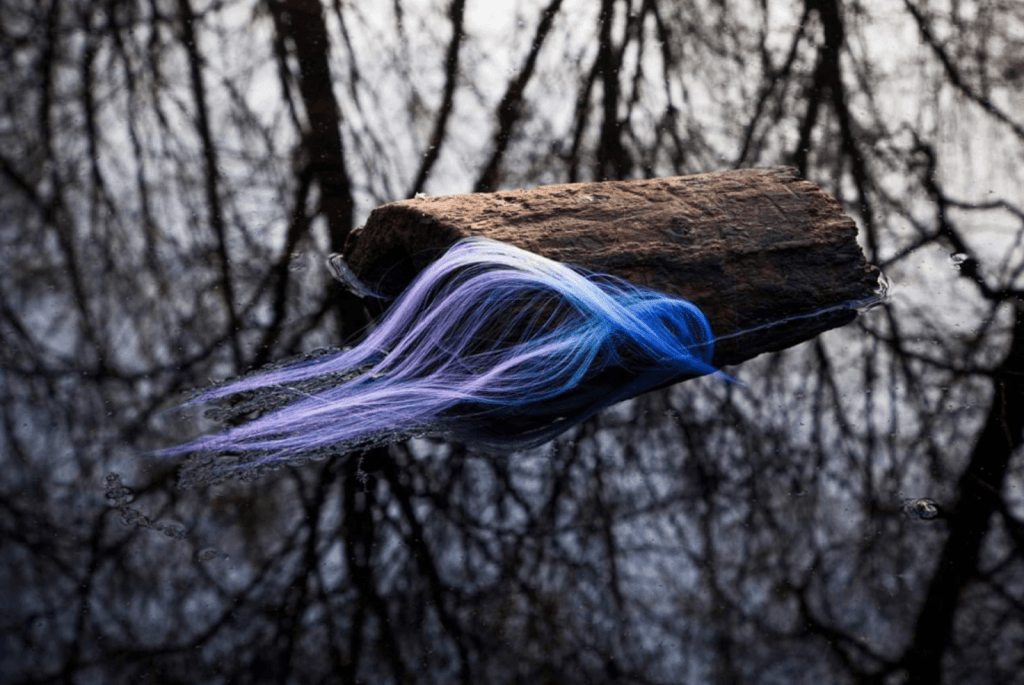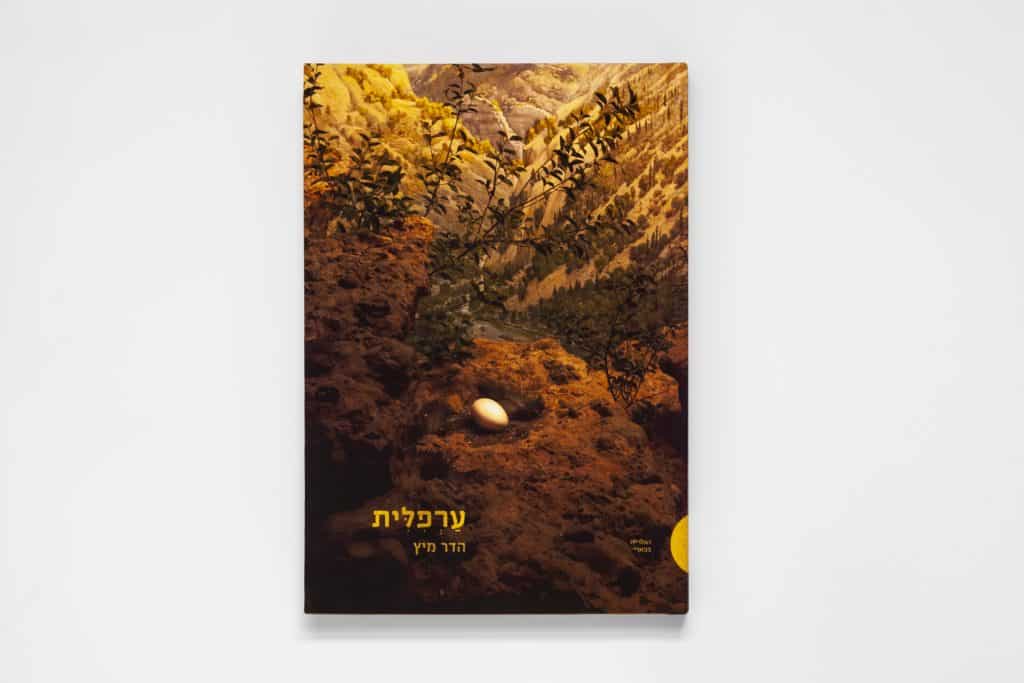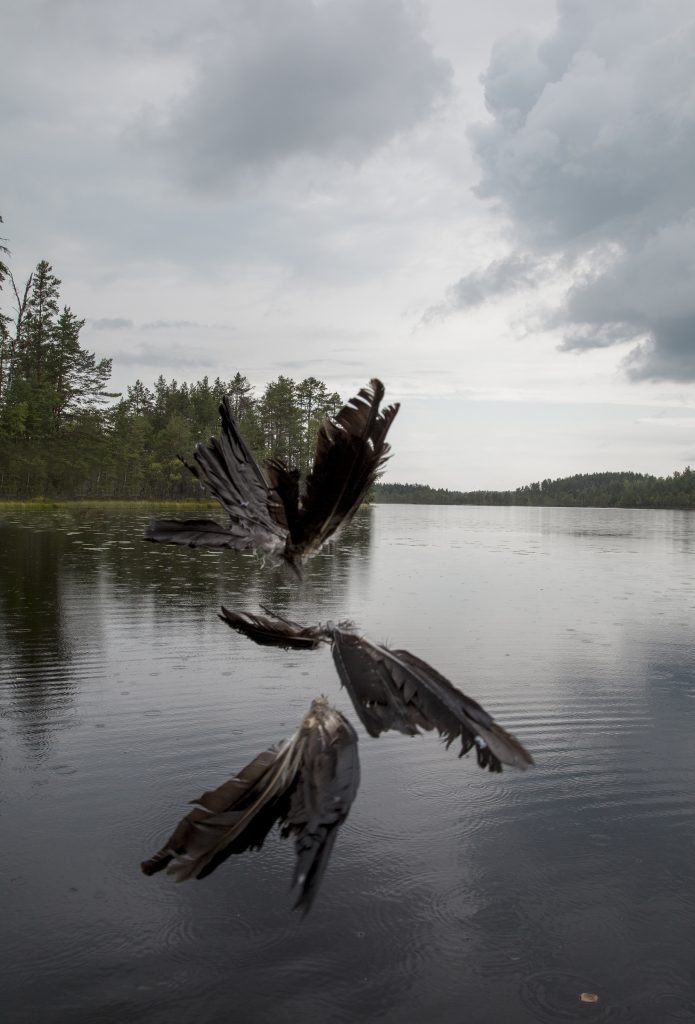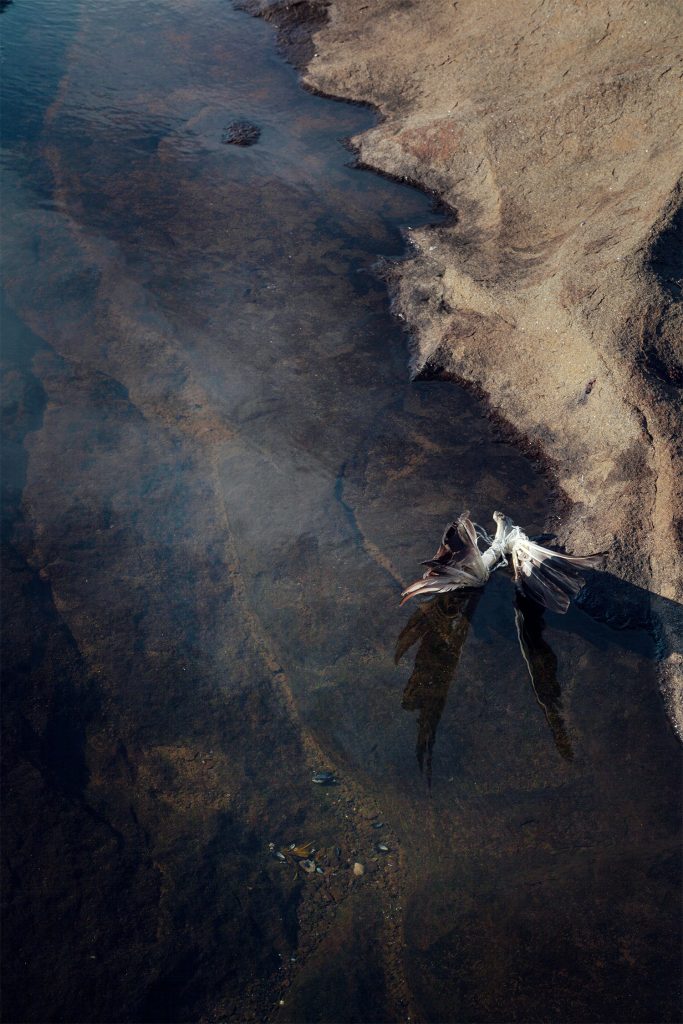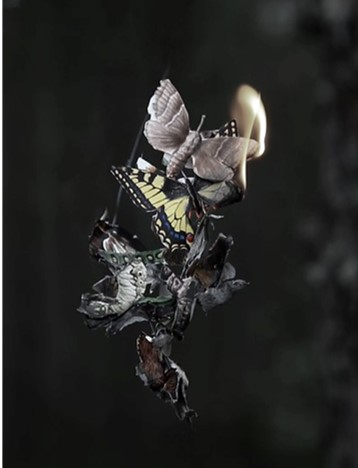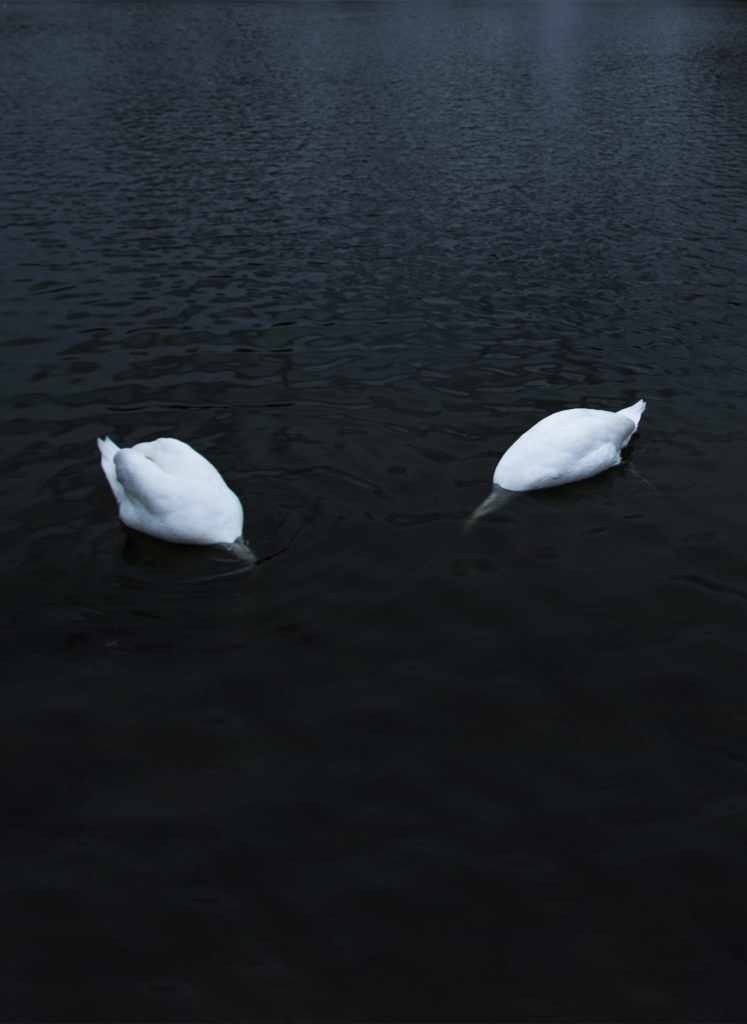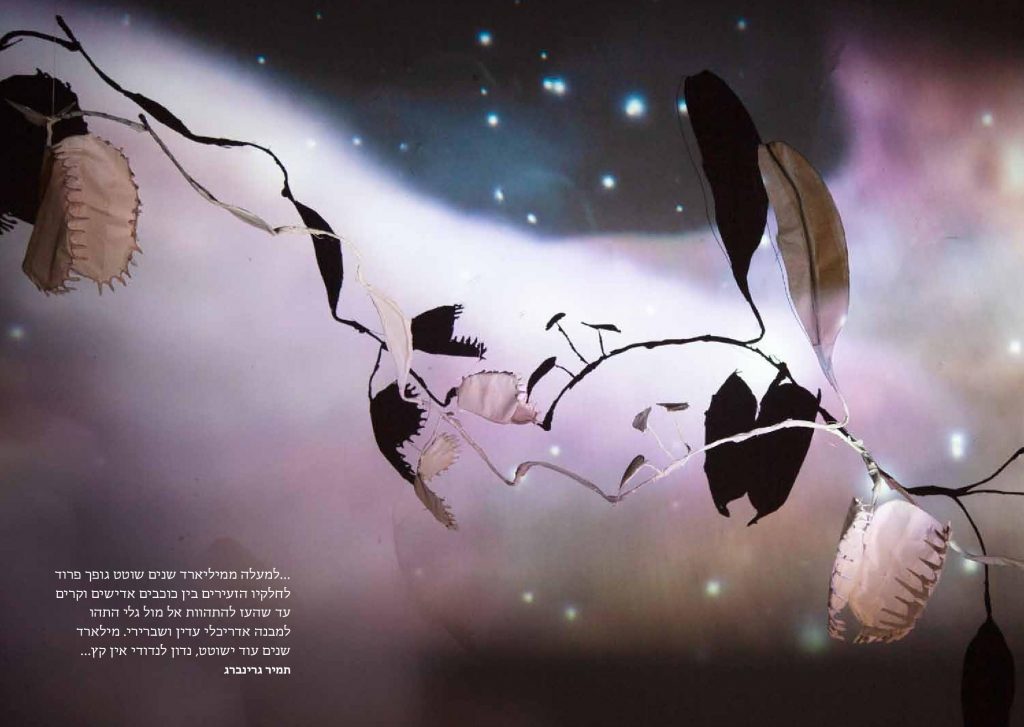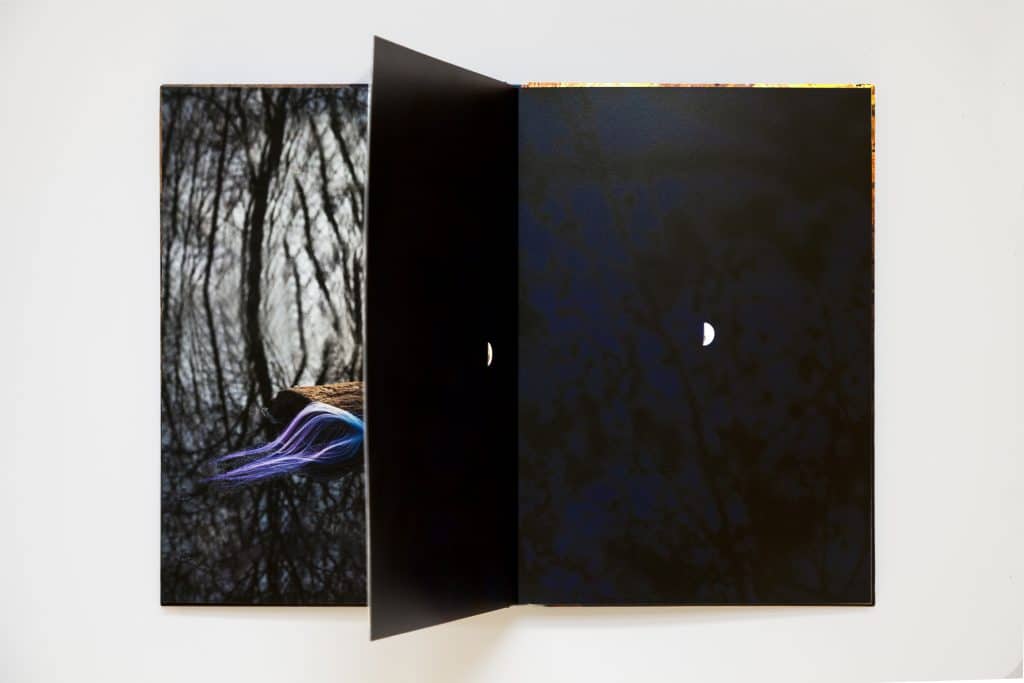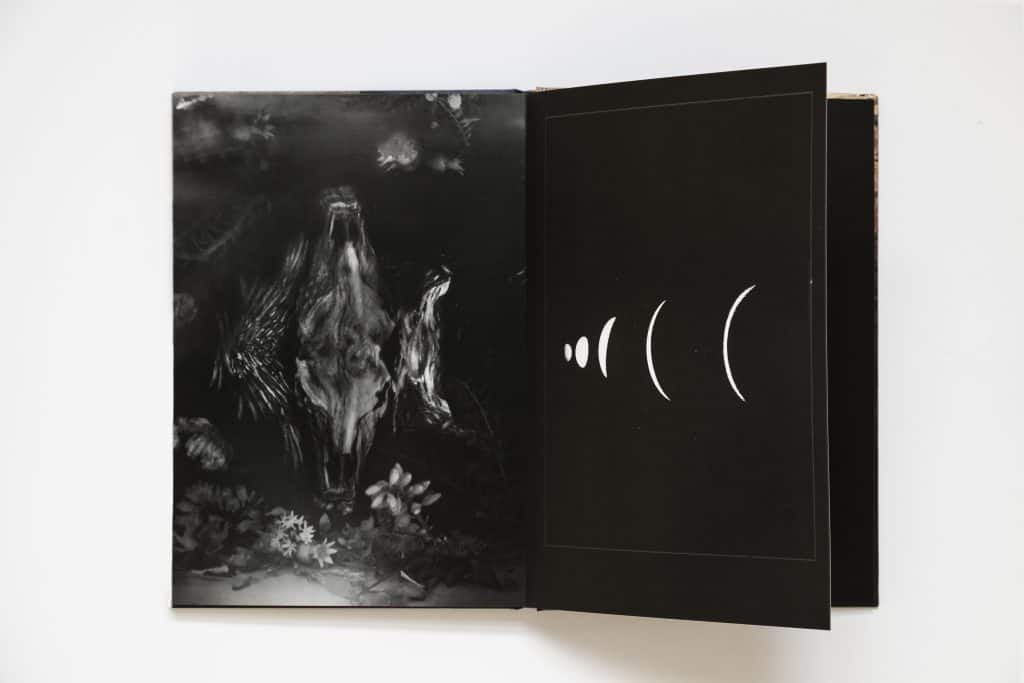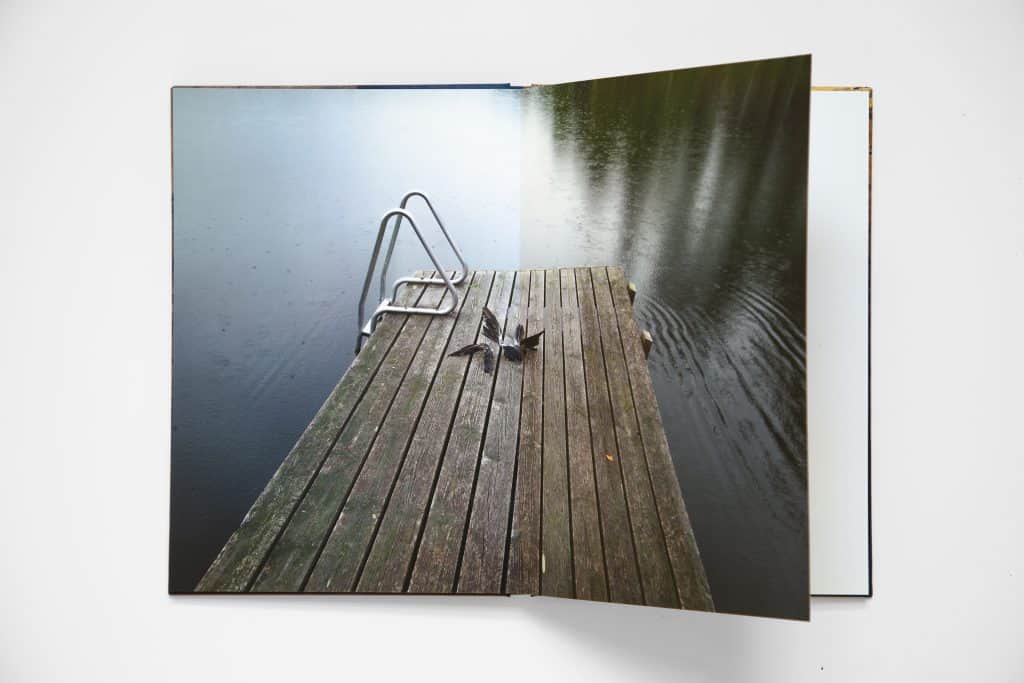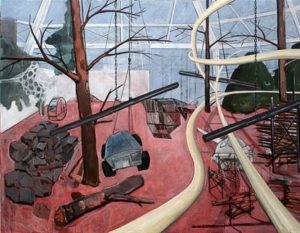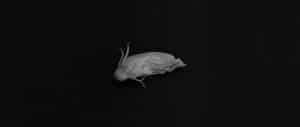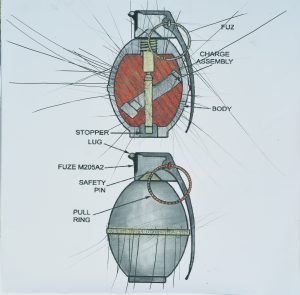Nebula
By: Sofie Berzon MacKie
On: Life, the universe and everything
“Consider them both, the sea and the land;
and do you not find a strange analogy
to something in yourself?”
– Herman Melville, Moby-Dick; or, the Whale-
1.
In the beginning, we shall divide the waters which were under the firmament from the waters which were above the firmament
Then we dive, through the familiar bright shallow waters, to the bottom of the deep sea.
95% of it remains uncharted territory. Creatures live there, in darkness, cold and pressure. Hydrothermal vents, octopuses, clams and shrimp (It is thought that active hydrothermal vents exist on Europa, one of Jupiter’s 79 moons. 79! We only have one). There in the warm waters of the ocean, some 3.5 billion years ago, probably near the shores, evolved a primordial soup of organic molecules and life on our little rock begun.
We belong on a solid crust of land, 30 km deep on average, between our feet to the flowing inner layer and core. Above us our thin atmosphere. Beyond that, an abyss. We are born with a primeval urge to leave the fragile layer we live on and journey to the ends of the universe, deep sea beds, our conscious and subconscious. Journeying into the water, skies or mind is one of the same. Our movement through the world is experienced not only as progressing forward, from birth to death. But as a movement inward. The axis of time in our existence is also that of meaning, allowing us to create a sense of belonging and coherence. It might be an artificial self-made connection, concealing the truth about the underlying chaos in a series of events. But it might be an act of revealing the natural essence of things, destined to bond with each other.
2.
We move inward and out with deep existential, philosophical questions. A human search after the source of everything, draped with a bone-deep sense of wonder. Imagination and curiosity, dreaming and day dreaming, are some of the most powerful forces that propel the human race forward. Stripped from our dreams we suffer from insomnia, a barren state of stagnation and worry. So different from passionate vitality, crossing times and places inside ourselves, creating new worlds.
We are the descendents of our ancestral mothers and fathers, who from the beginning of human history dreamt the skies in constallaions. Dozens of them. The Great Bear, Phoenix, Serpens. Once upon a time on a dark dark night we stared up into the heavens. We saw then as we see now, alongside the cloudy Milky Way, stars scatterd like salt from a salt shaker. Like ours, different from ours. Even if the world around us does not resemble that of 200,000 years ago, the skies above us are just the same. It is a thick knot tying humans to themselves in a chain of generations, since we first wandered the earth. That gaze tugs on something deep inside ourselves. We realize our irrelevance on a cosmic level, our temporary lives. Awareness of our years passing in the calendar of the universe, of our physical size compared to infinitiy. How did we come to be part of this universal paradise, that did not always exist, and will at some point cease to exist? Planet earth is a small occurrence in the great cosmic arena, and we are even smaller, standing on our thin crust of land, a shifting tactonic plate, facing eternity.
3.
In 1990, space probe Voyager 1 was more than 6 billion km from earth. A distance we cannot comprehend with our limited human senses. Primary mission completed; it was leaving the solar system. At the request of astronomer Carl Sagan, NASA turned Voyager’s camera around to look back on the home it left so long ago. It took a picture of planet earth, what will come to be known as “Pale Blue Dot”. Earth is now a bright speck of dust, hovering in a beam of light, the vastness of space around it. A few years later Sagan wrote a book carrying the same name. In it he asks us:
“Look again at that dot. That’s here. That’s home. That’s us. On it everyone you love, everyone you know, everyone you ever heard of, every human being who ever was, lived out their lives. The aggregate of our joy and suffering, thousands of confident religions, ideologies, and economic doctrines, every hunter and forager, every hero and coward, every creator and destroyer of civilization, every king and peasant, every young couple in love, every mother and father, hopeful child, inventor and explorer, every teacher of morals, every corrupt politician, every “superstar,” every “supreme leader,” every saint and sinner in the history of our species lived there-on a mote of dust suspended in a sunbeam.” Is it not interesting how something can mean so much and absolutely nothing at the same time.
Is it not interesting how something can mean so much and absolutely nothing at the same time.
4.
On board the space probe and very far from home, travels a gold record. A message in a bottle, with sounds and images of life on earth. It is a greeting to any intelligent extra-terrestrial life it may meet along the way. 116 images and sounds of nature: waves, wind, thunder, bird song. Musical pieces from different cultures and times, greetings in 55 languages. Images and diagrams of mathematical and physical quantities, our solar system and planets, DNA and human anatomy. Indications of size, scale and mass, chemical composition. The record is a small time-capsule, a coded safe of what makes us who we are- human beings, living here on our planet. Noa’s Arc of our human essence. “Human essence”.
God created man in his own image; he created him in the image of God. We are all stardust.
In an interview for TIME magazine in 2008, astrophysicist Neil deGrasse Tyson was asked, “What is the most astounding fact you can share with us about the universe?” He responded by saying: “The most astounding fact… is the knowledge, that the atoms that comprise life on Earth – the atoms that make up the human body – are traceable to the crucibles that cooked light elements into heavy elements in their core, under extreme temperatures and pressures. These stars, the high mass ones among them…collapsed and then exploded, scattering their enriched guts across the galaxy: guts made of Carbon, Nitrogen, Oxygen, and all of the fundamental ingredients of life itself. These ingredients become parts of gas clouds that condense, collapse, form the next generation of solar systems – stars with orbiting planets – and those planets now have the ingredients for life itself. So that when I look up at the night sky and I know that, yes, we are part of this universe, we are in this universe, but perhaps more important than both of those facts is that the universe is in us. When I reflect on that fact, I look up, many people feel small – ’cause they’re small and the universe is big – but I feel big. because, my atoms came from those stars…. That’s precisely what we are, just by being alive. “
5.
Stars are also born and eventually die. In a nebula, starting a process that will evolve into your eyes reading these very letters. We find in nature, that on earth and beyond, a pattern of forming and forging in cycles of destruction and construction. The world and us within it, moves between chaos and disorder to harmony of creation. These cycles exist also in the human soul and spirit. The self dies and is reborn over and over. Time and experience, birth and death are connected to each other, created from each other. Like the Ouroboros, the snake eating its own tail, slaying himself and bringing himself to life. Fire destroys but cleanses, earth is the source of life or the place we return to, water can drown or baptize. Remember, you will return to the ground from which you came
“We shall not cease from exploration
And the end of all our exploring
Will be to arrive where we started
And know the place for the first time.
Through the unknown, remembered gate
When the last of earth left to discover
Is that which was the beginning;
At the source of the longest river
The voice of the hidden waterfall
And the children in the apple-tree
Not known, because not looked for
But heard, half-heard, in the stillness
Between two waves of the sea.”
-T. S Eliot, Little Gidding, 1942-
6.
And if we come to an end where we started, with such a fundamental question; the answer is as we already know, 42.
–“Forty-two!” yelled Loonquawl. “Is that all you’ve got to show for seven and a half million years’ work?”
“I checked it very thoroughly,” said the computer, “and that quite definitely is the answer. I think the problem, to be quite honest with you, is that you’ve never actually known what the question is.”–
July 2020

